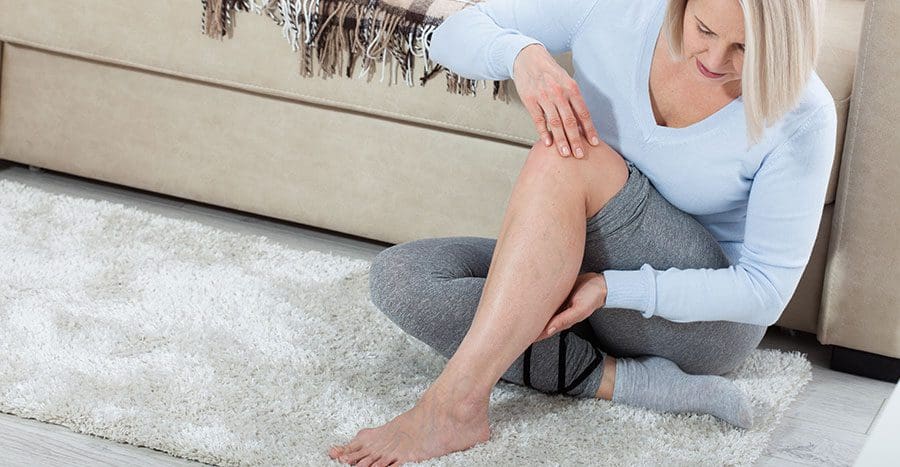Q: What are varicose veins?
A: Varicose veins are raised, enlarged veins. Which usually appear on the skin surface and can cause the leg to swell, burn, fatigue, itch, or ache. In severe cases, they can bleed, lead to skin discoloration or cause ulcers. Normal vein valves close after blood travels up the vein, preventing blood from moving backwards (refluxing) down the vein. Varicose veins form when valves in the vein fail (become incompetent). Valves become incompetent for a variety of reasons, including heredity, trauma, and pregnancy. Once a valve becomes incompetent, the vein below the valve is exposed to higher pressure and becomes dilated. This causes other valves to fail and other veins to dilate.
Q: What are symptoms of varicose veins?
The symptoms of varicose veins can include:
- Leg pain, aching, or cramping
- Burning or itching
- Leg or ankle swelling
- Heavy feeling in legs or fatigue
- Skin Discolorations or texture changes
- Open wounds or sores
Q: How are varicose veins diagnosed?
A: Along with your initial physical exam further testing is often required which includes duplex Doppler ultrasound exams of the legs. This non-invasive test uses sound waves to evaluate the function of the valves in the veins of the leg. This test is very important in diagnosis, and can improve the effectiveness of any treatment.
Q: How are varicose veins treated?
A: Both invasive and non-invasive methods are available for varicose vein treatment. Non-invasive methods include wearing compression stockings, exercising, losing weight, elevating the legs, avoiding long periods of standing or sitting. Invasive varicose vein treatment include endovenous therapy, ligation, and phlebectomy. Endovenous therapy is treatment from inside the vein using heat generated by lasers, or chemicals to irritate the vein walls and cause the vein to shrink and then be reabsorbed by the body.
Q: How does a laser treat varicose veins?
A: A Laser is a highly concentrated beam of light. These lasers work by delivering just the right wavelength of laser energy to the right tissue, causing the incompetent vein to close while your body automatically routes the blood to other healthy veins. Laser treatments are very effective in vein removal.
Q: What is the actual procedure like?
A: The procedure takes place right in our office in Flower Mound with no general anesthesia required. The vein doctor will insert a thin laser fiber into the vein through a sheath and the laser light is emitted through the fiber. While you might feel some unfamiliar sensation it is not painful.
Q: What is the advantage of treating varicose veins by Laser?
A: There is no anesthesia, minimal pain, and one can return to normal activities the next day. There is minimal to no scarring, bruising, or swelling.
Q: How long does the procedure take?
A: The vein treatment procedure takes 45-60 minutes, though patients might spend 2 hours at our office due to normal pre and post treatment procedures.
Q: How effective is the laser treatment your office offers?
A: Varicose vein laser treatment success rate is greater than 95%.
Q: How soon can I return to work or normal activities?
A: Normal activities can typically be resumed within a day. For a few weeks following vein treatment, Dr. Handley may recommend regular walking and refrain from very strenuous activity or prolonged standing for 2 weeks.
Q: What happens to the treated vein?
A: The vein becomes fibrous tissue after treatment. Overtime the vein will gradually be reabsorbed by the body.
Q: What are the risks and complications?
A: As with any medical procedure, there are potential risks and complications, which can occur. Dr. Handley will review potential complications at your consultations, which can include vessel perforation, thrombosis, pulmonary embolism, phlebitis, hematoma, infection, paresthesia (numbness or tingling) and or skin burn.
Q: Does insurance cover these procedures?
A: 98% of all procedures are covered by insurance.
Q: What are venous stasis ulcers?
A: A skin ulcer, caused by a venous reflux disorder is called a venous stasis ulcer. It is an irregularly shaped wound with well-defined borders, surrounded by red or dark and thickened skin. Venous ulcers vary in size and location, but are usually found on the inside of the lower leg.
Q: How are venous stasis ulcers treated?
A: Patients with venous ulcers need compression treatment. Bandages, stockings and compression devices have been used for compression treatment. Bandaging is used short term to reduce swelling and stockings are used long term to keep swelling at a minimum. Compression devices are sometimes used as well. These are often worn at night. Compression leads to increased venous flow, which leads to decreased swelling. In order to achieve maximum benefit from compression the patient needs to walk. Walking increases the action of the calf muscle pump; this also decreases swelling and edema.
Q: What are medical grade compression stockings?
A: Compression stockings or socks, which are now available in a variety of styles and fashion colors, are recommended for early treatment of venous insufficiency. They compress the lower leg and decrease the swelling and the other symptoms of varicose veins. They come in various strengths and are fitted by a trained person. They are worn as treatment of varicose veins and after treatment to assist in the healing process, and maximize results of therapy, reduce risk of deep vein thrombosis.
If you have any more questions about vein treatments at North Texas Vein & Vascular, call (972) 619-7260 or schedule an appointment online.
